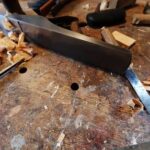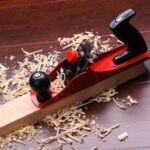Woodwork adds a touch of elegance and charm to any home, but over time, it can become covered in dirt and grime. Knowing what to clean wood off of woodwork is essential for maintaining its beauty and preserving its lifespan.
From dust and grease to water stains, various types of dirt can accumulate on woodwork. In this article, we will explore the importance of maintaining clean woodwork and discuss the common types of dirt and grime that can build up on these surfaces.
Regular cleaning is crucial for the upkeep of woodwork, as it not only enhances its appearance but also prevents damage and deterioration. Understanding the different types of dirt that can accumulate on woodwork is the first step in effectively cleaning and maintaining these surfaces. Whether it’s dust from everyday wear and tear or stubborn grease and grime in kitchen areas, knowing how to address these issues is essential for ensuring the longevity of your woodwork.
By identifying the type of woodwork in your home, whether it’s stained, painted, or natural wood, you can determine the best cleaning methods for each type. Additionally, recognizing the finish on the woodwork will help you choose suitable tools and supplies for cleaning without causing any damage. Stay tuned as we delve into understanding the type of woodwork and provide tips for recognizing different finishes so you can effectively clean your wooden surfaces with confidence.
Understanding the Type of Woodwork
Woodwork comes in a variety of types and finishes, and understanding these differences is crucial when determining the best cleaning methods. Whether it’s hardwood floors, wooden furniture, or decorative wood trim, each type of woodwork requires specific care to ensure it remains clean and well-maintained.
When it comes to identifying the different types of woodwork, one should consider the kind of finish that has been applied. Some common wood finishes include varnish, shellac, lacquer, and oil-based finishes. Each finish requires a different approach to cleaning and maintenance. For example, while varnished wood can withstand water and mild cleaning solutions, oil-based finishes are more delicate and may require specialized products for cleaning.
Recognizing the finish on the woodwork is also essential in determining the appropriate cleaning method. A simple test to identify the finish is to put a few drops of water on an inconspicuous area. If the water beads up, it indicates a varnish or other hard finish; if it soaks into the wood slowly, it’s likely an oil-based finish; if it soaks in quickly, then it could be a wax or shellac finish.
Understanding the type of woodwork not only ensures that you clean it effectively but also helps prevent damage during the cleaning process. By recognizing the different types of woodwork and their respective finishes, you can select suitable cleaning products and techniques to maintain their quality and appearance.
| Type of Woodwork | Identifying Finish |
|---|---|
| Hardwood Floors | Varnish: Water beads up on surface |
| Wooden Furniture | Oil-Based Finish: Water soaks into wood slowly |
| Decorative Wood Trim | Shellac: Water soaks in quickly |
Tools and Supplies Needed
To effectively clean woodwork, you will need a few essential tools and supplies. Here is a list of items that are commonly used:
- Soft cloths or microfiber towels: These are gentle on the wood and can be used for dusting and wiping down surfaces without causing damage.
- Wood cleaner: There are specially formulated wood cleaners available that are designed to remove dirt, dust, and grime without stripping the wood of its natural finish.
- Mild soap solution: A mixture of mild dish soap and water can also be used for cleaning woodwork, especially for removing grease or stubborn stains.
- White vinegar: This natural cleaning agent can be diluted with water to create an effective solution for cleaning wood surfaces.
- Baking soda: For tougher stains or grease buildup, a paste made from baking soda and water can be used as a gentle abrasive cleaner.
Once you have gathered the necessary tools and supplies, it’s important to understand how each one is used in the cleaning process. For example, soft cloths should be used for dusting and removing loose debris before applying any cleaning solutions.
Wood cleaner should be applied according to the manufacturer’s instructions, typically being sprayed onto the surface and then wiped away with a cloth. For homemade solutions like mild soap or white vinegar mixtures, it’s important to test them on a small, inconspicuous area first to ensure they don’t cause any damage to the woodwork.
By having these tools and supplies on hand, you can effectively clean different types of dirt off of your woodwork without causing any damage to the surfaces. Whether it’s simple dusting or tackling tougher stains, being prepared with the right tools and supplies is key to maintaining clean and well-maintained woodwork in your home.
Preparing the Woodwork for Cleaning
Before you start cleaning your woodwork, it’s important to properly prepare the surfaces to ensure a thorough and effective cleaning process. Here are some steps to follow when preparing the woodwork for cleaning.
Step 1: Remove Loose Debris
The first step in preparing woodwork for cleaning is to remove any loose debris or dust that may have accumulated on the surfaces. Use a soft-bristle brush or a vacuum cleaner with a brush attachment to gently remove any loose dirt, dust, or cobwebs from the woodwork. Pay special attention to corners, crevices, and intricate designs where debris may be easily overlooked.
Step 2: Test for Finish
Before applying any cleaning solution to the woodwork, it’s important to determine the type of finish on the surfaces. Different finishes require different cleaning methods, so conducting a simple test can help you avoid damaging the woodwork. Dab a small amount of water onto an inconspicuous area of the woodwork and observe how it reacts.
If the water beads up, it is likely that the surface has been finished with a protective sealant. If the water is absorbed into the wood immediately, it may indicate an unfinished or oil-finished surface.
Step 3: Protect Surrounding Areas
When preparing to clean woodwork, take steps to protect surrounding areas from any potential drips or splashes from the cleaning process. Lay down drop cloths or plastic sheeting to safeguard floors and furniture near the woodwork. This precaution will minimize cleanup efforts after completing your woodwork cleaning project.
By following these steps to prepare your woodwork for cleaning, you’ll set yourself up for success when it comes time to tackle dirt and grime on your beloved wooden surfaces.
Cleaning Techniques for Different Types of Dirt
Woodwork can accumulate various types of dirt and grime over time, from dust and grease to water stains. Knowing how to properly clean different types of dirt off woodwork is essential for maintaining its appearance and prolonging its lifespan. In this section, we will discuss specific cleaning techniques for removing dust, grease, grime, and water stains from woodwork.
Removing Dust
Dust is one of the most common types of dirt that accumulates on woodwork. To remove dust from woodwork, start by using a microfiber cloth or a soft-bristled brush to gently wipe or brush away the dust.
It’s important to avoid using rough materials or abrasive cleaning tools as they can scratch the surface of the wood. For hard-to-reach areas, a vacuum with a soft brush attachment can be used to effectively remove dust without causing damage to the woodwork.
Eliminating Grease and Grime
When it comes to removing grease and grime from woodwork, it’s best to use a mild detergent mixed with warm water. Dampen a clean cloth with the soapy solution and gently scrub the affected area. Be sure to rinse the cloth regularly in clean water and wring it out before continuing to avoid spreading the grease or grime. After cleaning, dry the area thoroughly with a clean towel to prevent any water damage.
Treating Water Stains
Water stains on woodwork can be particularly stubborn to remove. To treat water stains, mix equal parts white vinegar and olive oil in a small bowl and apply the solution onto the stained area using a soft cloth. Gently rub the mixture onto the stain in circular motions until it begins to fade. Once the stain has been lifted, wipe off any excess oil and vinegar residue with a clean cloth.
By understanding these specific cleaning techniques for different types of dirt on woodwork, you can effectively maintain its cleanliness without causing any damage. Whether it’s removing dust, grease, grime or water stains, utilizing the right products and application methods is essential for preserving the beauty of your woodwork.
Remember that regular maintenance is key in preserving your wooden surfaces for years to come.
Protecting and Maintaining Woodwork
When it comes to protecting and maintaining the cleanliness of woodwork, there are several key tips to keep in mind. After cleaning the woodwork, it is important to apply a protective finish to prevent future damage and maintain its appearance.
This can be done using various products such as wax, polish, or oil-based finishes, depending on the type of wood and its finish. Regular use of these products will help protect the wood from scratches, moisture, and other types of damage.
In addition to applying a protective finish, it is also important to regularly dust and clean the woodwork to prevent dirt and grime from building up. Using a soft cloth or duster can help remove surface dust, while a gentle cleaner can be used for more thorough cleaning when needed. It’s important to avoid harsh chemicals that can damage the wood or its finish.
Proper maintenance also involves keeping an eye out for any signs of wear or damage on the woodwork. Promptly addressing any issues such as scratches, dents, or water stains can help prevent them from becoming more severe over time. Repairing these issues as soon as they are noticed will contribute to the overall longevity of the woodwork.
| Tools | Supplies |
|---|---|
| Soft cloth or duster | Wax |
| Gentle cleaner | Polish |
| Wood repair kit | Oil-based finish |
By following these tips and being proactive about maintenance, you can ensure that your woodwork remains in top condition for years to come. Preventative care will not only preserve the beauty of the wood but also help avoid costly repairs in the future.
Common Mistakes to Avoid
When it comes to cleaning woodwork, there are several common mistakes that people often make, which can have detrimental effects on the appearance and longevity of the wood. It’s important to be aware of these mistakes and how to avoid them in order to properly clean and maintain your woodwork.
To help you steer clear of these pitfalls, here are some common mistakes to avoid when cleaning woodwork:
- Using abrasive cleaners: One of the most common mistakes people make when cleaning woodwork is using harsh or abrasive cleaners. These can scratch and damage the wood, causing it to lose its luster over time. Instead, opt for gentle, non-abrasive cleaners specifically designed for wood.
- Ignoring the finish: Another mistake is not considering the type of finish on the woodwork. Different finishes require different cleaning methods, so it’s important to identify the finish before proceeding with any cleaning process.
- Overlooking proper drying: After cleaning, it’s crucial to ensure that the woodwork is properly dried. Leaving moisture on the surface can lead to water stains or even warping of the wood.
By avoiding these common mistakes, you can ensure that your woodwork remains in top condition and continues to bring warmth and beauty to your home.
Remember, taking care of your woodwork not only maintains its aesthetic appeal but also prolongs its lifespan. With proper cleaning techniques and regular maintenance, you can enjoy your beautifully clean woodwork for years to come.
Conclusion
In conclusion, maintaining clean woodwork is essential for preserving the beauty and longevity of any wooden surfaces in your home. Understanding the type of woodwork and the appropriate cleaning methods for each type is crucial to ensure that you are not causing any damage while trying to clean it. Whether it’s dust, grease, grime, or water stains, knowing the right techniques and products will help you achieve a spotless finish without harming the wood.
It’s important to have the right tools and supplies on hand before starting the cleaning process. By properly preparing the woodwork and removing any loose debris or dust beforehand, you can ensure a more thorough and effective cleaning outcome. Additionally, taking steps to protect and maintain the woodwork after cleaning will prolong its beauty and prevent future build-up of dirt and grime.
Frequently Asked Questions
What Is the Best Thing to Clean Woodwork With?
The best thing to clean woodwork with is a mild soap and water solution. Mix a small amount of gentle dish soap in warm water and use a soft cloth to wipe down the woodwork. This will effectively remove dirt and grime without damaging the wood.
What Is the Best Cleaning Solution for Wood Trim?
The best cleaning solution for wood trim is a mixture of vinegar and water. Simply combine equal parts white vinegar and water in a spray bottle, then spritz the solution onto a soft cloth and wipe down the wood trim. This gentle yet effective solution will help remove dust and grease from the trim.
How Do You Clean Wood Without Damaging the Finish?
To clean wood without damaging the finish, it’s important to use a gentle approach. Avoid harsh chemicals or abrasive cleaners, which can strip away the protective finish on the wood.
Instead, opt for mild soap and water or a vinegar and water solution, being careful not to oversaturate the wood surface. Additionally, always test any cleaning method on a small, inconspicuous area first to ensure it doesn’t cause damage.

Hi everyone! I’m a woodworker and blogger, and this is my woodworking blog. In my blog, I share tips and tricks for woodworkers of all skill levels, as well as project ideas that you can try yourself.





